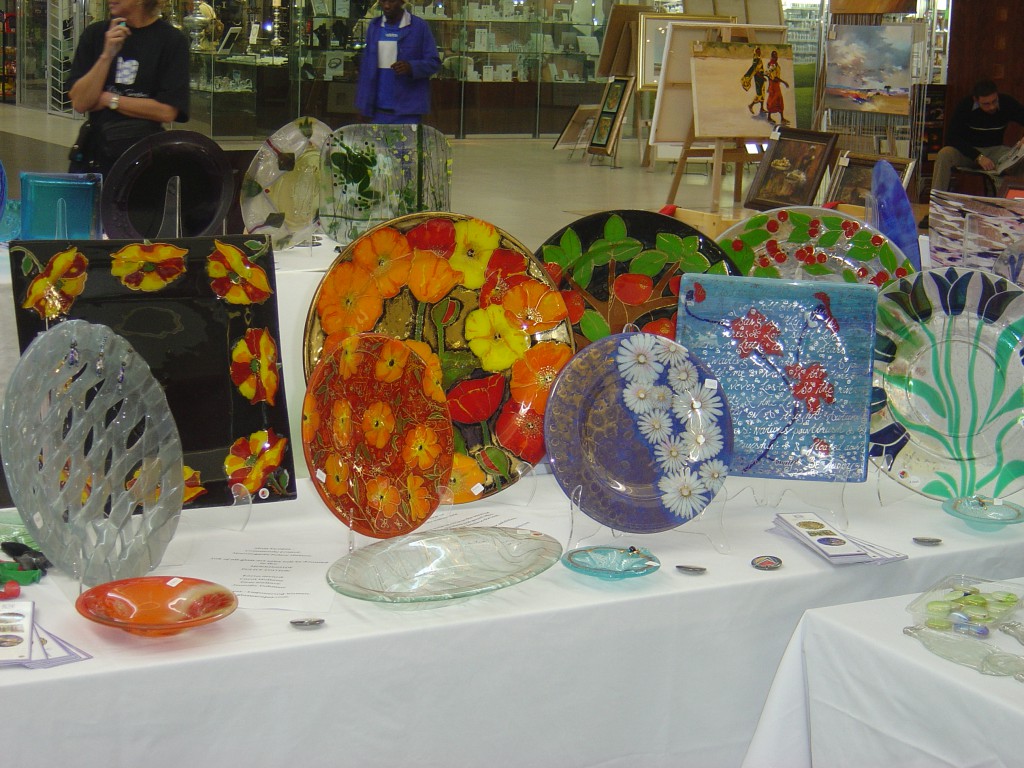Exploring the Artistic Contrasts: Stained Glass vs. Glass Slumping
In the world of glass artistry, two techniques stand out for their mesmerizing beauty and creative potential: stained glass and glass slumping. While both involve the manipulation of glass to achieve stunning visual effects, they represent distinct approaches with unique characteristics. Let’s delve into the differences between stained glass and glass slumping, uncovering the intricacies of each method and their artistic implications.
Stained Glass: A Tapestry of Color and Light
Stained glass has a storied history dating back centuries, characterized by its vibrant colors, intricate designs, and luminous quality. Traditionally associated with cathedral windows and religious iconography, stained glass has evolved into a versatile medium embraced by artists around the world.
The process of creating stained glass begins with selecting and cutting individual pieces of colored glass, which are then assembled using lead came or copper foil. Artists meticulously arrange the glass fragments to form intricate patterns and images, often drawing inspiration from nature, mythology, or religious symbolism.
Once assembled, the glass panels are soldered together to create a cohesive structure, with each seam reinforcing the overall composition. The final step involves cleaning and finishing the piece, often by applying a patina to the solder lines to enhance their visual appeal.
Stained glass windows are celebrated for their ability to diffuse light, casting a kaleidoscope of colors and patterns into the surrounding space. Whether adorning a cathedral, a museum, or a private residence, stained glass serves as a captivating focal point, inviting viewers to immerse themselves in its luminous beauty and symbolic richness.

Glass Slumping: Shaping Form and Texture
Glass slumping, also known as kiln forming or glass bending, offers a different approach to glass artistry, emphasizing form and texture over color and line. Unlike stained glass, which relies on flat, two-dimensional compositions, glass slumping allows artists to manipulate glass into three-dimensional shapes and contours, creating sculptural works of art with a tactile presence.
The process of glass slumping begins with a sheet of glass, which is placed in a kiln and heated to a precise temperature until it becomes soft and malleable. At this stage, the glass can be manipulated using molds, forms, or gravity to achieve the desired shape and texture. Artists may experiment with various techniques, such as draping, bending, or casting, to create dynamic and expressive forms.
Once the glass has cooled and solidified, it retains the contours and textures imparted by the shaping process, resulting in a finished piece that is both visually striking and physically engaging. From sculptural vessels and bowls to architectural installations and decorative accents, glass slumping offers endless possibilities for artistic exploration and experimentation.

Contrasts and Complementarity
While stained glass and glass slumping represent distinct approaches to glass artistry, they are not mutually exclusive. In fact, they often complement each other, with artists incorporating elements of both techniques into their work to achieve richly layered and multidimensional compositions.
Stained glass windows may incorporate slumped glass elements to add depth and dimension to the overall design, while glass slumping techniques can be used to create custom fixtures or accents that enhance the visual impact of a space.
Ultimately, whether working with stained glass, glass slumping, or a combination of the two, artists continue to push the boundaries of glass artistry, creating captivating works that inspire wonder and admiration. As we celebrate the diversity and creativity of the glass art world, we are reminded of the enduring power of this ancient and luminous medium to captivate our imaginations and enrich our lives.
- Unveiling the Luminous Legacy: Stained Glass in Africa
- The Tranquil Beauty: Exploring How Glass Art Can Be Incredibly Relaxing
